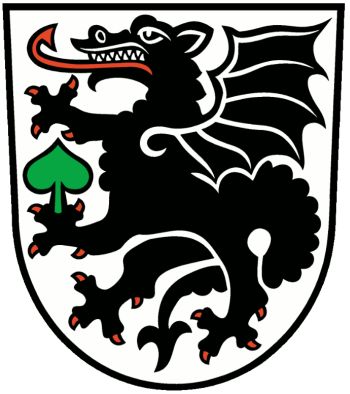Drachhausen: Difference between revisions
Knorrepoes (talk | contribs) m (Text replacement - "{{media}} Literature : " to "Literature : {{media}} ") |
Knorrepoes (talk | contribs) m (Text replacement - "Literature :" to "'''Literature''':") |
||
| Line 21: | Line 21: | ||
The canting dragon was already used in the 1920s as a village symbol. When the municipality applied for arms in the 1990s it was required to add an additional symbol to distinguish the arms from other municipal arms with dragons. It was decided to add a linden leaf, symbol for the Sorbic population of the area. | The canting dragon was already used in the 1920s as a village symbol. When the municipality applied for arms in the 1990s it was required to add an additional symbol to distinguish the arms from other municipal arms with dragons. It was decided to add a linden leaf, symbol for the Sorbic population of the area. | ||
[[Civic Heraldry Literature - Germany|Literature]] : | [[Civic Heraldry Literature - Germany|'''Literature''']]: | ||
{{media}} | {{media}} | ||
Revision as of 05:08, 9 September 2022
This page is part of the German heraldry portal Deutsche Wappensammlung |
Heraldry of the World |
|
German heraldry:
|
Selected collector's items from Germany:
|
DRACHHAUSEN
State : Brandenburg
District (Kreis) : Spree-Neisse
Amt : Amt Peitz
| German |
In Silber ein steigender, vierbeiniger, rotgezungter schwarzer Drache (Lindwurm) mit einem grünen Lindenblatt in der linken Vorderkralle Origin/meaningThe arms were officially granted on November 16, 1998. The canting dragon was already used in the 1920s as a village symbol. When the municipality applied for arms in the 1990s it was required to add an additional symbol to distinguish the arms from other municipal arms with dragons. It was decided to add a linden leaf, symbol for the Sorbic population of the area. Contact and SupportPartners: Your logo here ?
© since 1995, Heraldry of the World, Ralf Hartemink |













